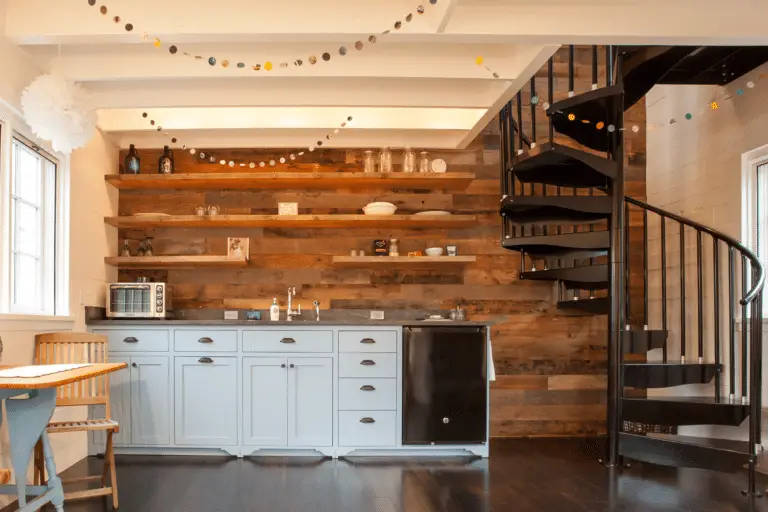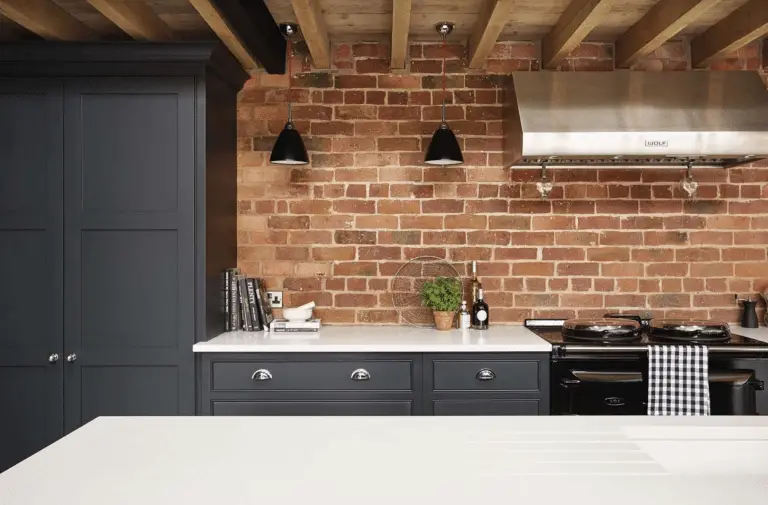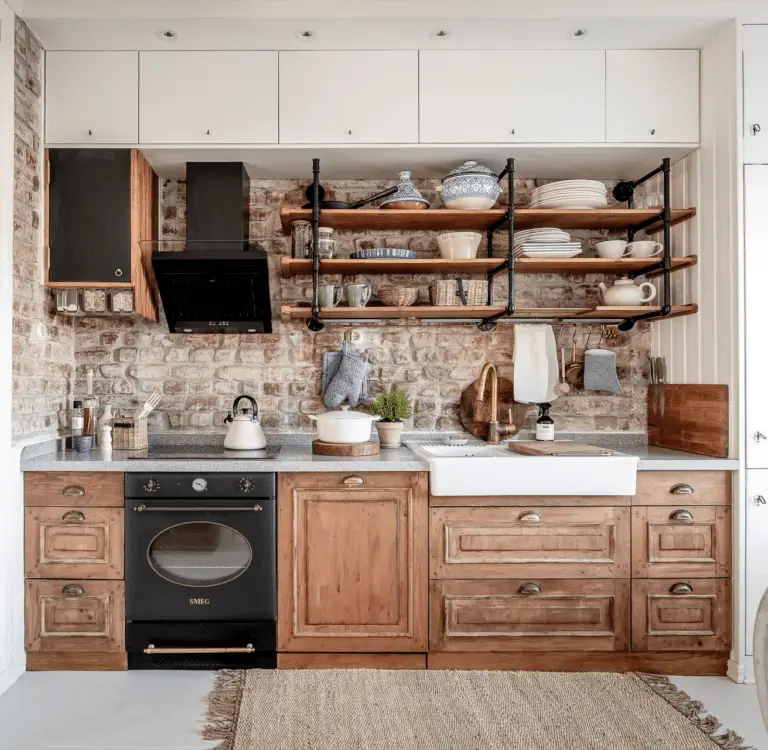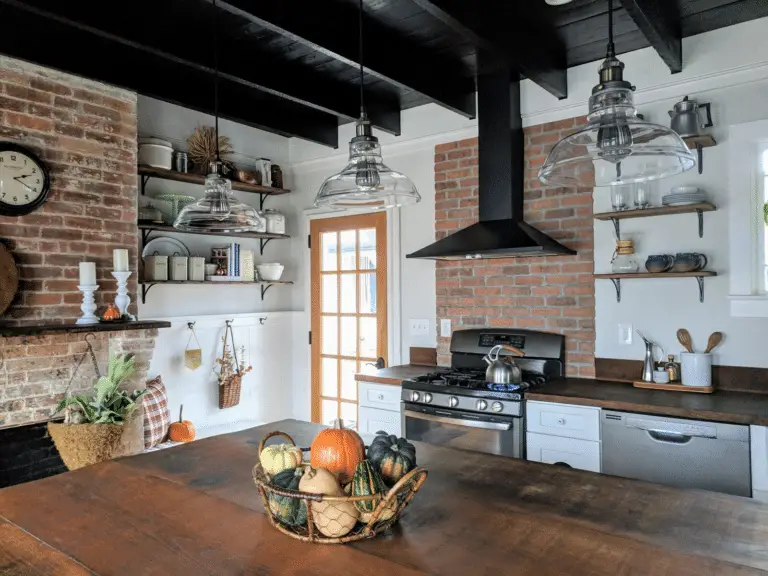Ready to transform your builder-grade kitchen with a DIY Subway Kitchen Backsplash Installation? This blog post covers everything you need to know to successfully tackle this project. From wall preparation and tile cutting techniques to tile selection and layout planning, we’ve got you covered.
Learn about the importance of proper tools, grouting, cleaning, and completing the installation for a flawless finish. Get ready to refresh your space with a stylish subway tile backsplash!

Introduction and Preparation for the DIY Subway Kitchen Backsplash Installation
The project of DIY subway kitchen backsplash installation aims to elevate the look of a builder-grade kitchen by adding a stylish and modern touch through the use of subway tiles. Before diving into the actual installation process, it is crucial to start with the necessary preparation steps to ensure a smooth and successful outcome.
The Project Start and Essential Tools

As with any DIY project, the first step is to gather all the essential tools and materials required for the installation. This includes subway tiles, tile adhesive, grout, spacers, a tile cutter, a wet saw, a trowel, a level, a sponge, and a grout float. Properly assembling these tools will make the installation process more efficient and effective.
Wall Surface Preparation
One of the most critical aspects of the preparation phase is ensuring the wall surface is ready for tile installation. This involves removing the old backsplash, which may require scraping off existing adhesive and caulking. Additionally, any electrical outlets or cover plates on the wall should be removed for a smooth installation process.
The Importance and Process of Wall Preparation
Wall preparation is a crucial step in the DIY Subway Kitchen Backsplash Installation process. The condition of the wall plays a significant role in the success and longevity of the backsplash. Taking the time to properly prepare the wall surface ensures that the tiles adhere correctly and the finished result is flawless.

One key aspect of wall preparation is the removal of the old caulking and electrical outlets. Old caulking can prevent the tiles from laying flat against the wall and can interfere with the grouting process. Carefully removing the old caulking and ensuring a smooth, clean surface is essential for a professional-looking finish.

When dealing with electrical outlets, safety should be a top priority. Before beginning any work around electrical outlets, be sure to turn off the power to the area to prevent any accidents. Remove the cover plates and carefully work around the outlets, making sure to protect the area from any dust or debris that may be generated during the preparation process.

In addition to removing old caulking and outlets, it is important to inspect the wall surface for any imperfections or damage that may need to be addressed before tiling. Small holes or cracks should be filled in and smoothed out to create a level surface for the tiles to adhere to. Taking the time to properly prepare the wall ensures that the tile installation process goes smoothly and results in a professional-looking finished product.
By prioritizing wall preparation and taking the necessary steps to ensure a clean, smooth surface, you set yourself up for success in your DIY Subway Kitchen Backsplash Installation project. Taking the time to properly prepare the wall will result in a beautiful, long-lasting backsplash that enhances the overall look of your kitchen.
The Role of Tools and Techniques in Tile Cutting

When it comes to DIY subway kitchen backsplash installation, one of the crucial aspects that can make or break the project is tile cutting. Using the correct tools and mastering the right techniques are essential for achieving a professional-looking finish. Let’s dive into the key takeaways regarding the role of tools and techniques in tile cutting.
Importance of Correct Tools
The main tool needed for cutting subway tiles is a wet saw, which provides clean and precise cuts. A wet saw uses a diamond-tipped blade and water to reduce friction and prevent overheating, resulting in smooth cuts without damaging the tiles.

In addition to a wet saw, a grinder can be used for more intricate cuts or to make adjustments to tile pieces. A grinder allows for detailed shaping and finishing, especially around edges and corners. Having both tools on hand ensures flexibility and accuracy in tile cutting.
Tricks and Alternatives
While a wet saw is the preferred tool for cutting tiles, there are alternative methods for those who may not have access to one. For instance, a tile nipper can be used to make small cuts or to trim tile edges. Although slower and less precise than a wet saw, a tile nipper can be effective for minor adjustments.

Another common technique is using a tile scribe and a straight edge to create a score line on the tile surface, then breaking it along the line. While this method may not be suitable for all types of tiles, it can be a viable option for subway tiles with a smooth surface.
Overall, having the right tools and mastering various techniques for tile cutting are essential for a successful DIY subway kitchen backsplash installation. Investing time in perfecting your cutting skills will pay off in achieving a professional and polished look for your new backsplash.
Tile Selection and Layout Planning
When it comes to DIY subway kitchen backsplash installation, selecting the right tiles and planning the layout are crucial steps in achieving a professional finish.
Subway Texture Tiles

Subway texture tiles are a popular and timeless choice for kitchen backsplashes. Their simple rectangular shape and glossy finish can add a touch of elegance to any kitchen design. Whether you opt for classic white subway tiles or experiment with colored or textured varieties, subway tiles are versatile and easy to work with for both beginners and experienced DIYers.
Layout Planning
Before diving into tile installation, careful layout planning is essential to ensure a seamless and polished look. Start by determining the starting point for your tiles, which is typically an outside corner for a clean and symmetrical finish. Avoid ending up with tiny slivers of tile at the edges by adjusting the layout accordingly.

Consider creating a mock-up of your backsplash design on the floor using the actual tiles to visualize the layout and make any necessary adjustments before installing them on the wall. This step can help you avoid costly mistakes and ensure a professional outcome.
The DIY Subway Kitchen Backsplash Installation Process
As you approach the final stages of your DIY subway kitchen backsplash project, it is crucial to focus on the installation, grouting, cleaning, and completion of the task. This section will guide you through the remaining steps to ensure a successful finish to your kitchen refresh.
Installation Process
With your wall prepped and ready, it’s time to start the installation process. Utilize pre-mixed mortar to secure the tiles in place, ensuring proper spacing between each tile for a clean and uniform look. Begin with a full tile row along the bottom of the backsplash area, and work your way up from there. Use tile spacers to maintain consistency in the gaps between tiles as you progress.

When cutting tiles to fit around obstructions like outlets or corners, remember the tile cutting techniques you learned earlier in the project. Precision is key to achieving a professional finish, so take your time and double-check measurements before making any cuts.
Grouting and Cleaning
After all tiles are set in place and the mortar has dried according to the manufacturer’s instructions, it’s time to grout the spaces between the tiles. Choose a grout color that complements your subway tiles and your kitchen’s overall aesthetic. Use a grout float to press the grout into the gaps, working in a diagonal motion to ensure full coverage.

Once the grout has set slightly, typically after 15-30 minutes, begin cleaning the tiles with a damp sponge. Be gentle to avoid removing grout from the gaps. Continue this process, rinsing your sponge regularly, until the tiles are free of excess grout.
Grout haze removal is an important step in the cleaning process, as leftover residue can dull the appearance of your tiles. Use a haze remover according to the product’s instructions to achieve a pristine finish.
Completion and Final Touches
With the grouting and cleaning complete, your DIY subway kitchen backsplash is nearly finished. Re-install any outlets and cover plates that were removed during the project, ensuring a secure fit. Consider adding a custom window sill to complement your new backsplash, tying the design elements together for a cohesive look.

Step back and admire your handiwork, appreciating the transformation that a simple subway tile backsplash can bring to your kitchen. Your attention to detail and dedication to the project have resulted in a beautiful focal point that adds both style and functionality to the heart of your home.
Wrapping Up the DIY Subway Kitchen Backsplash Journey!
Embarking on a DIY subway kitchen backsplash installation journey is a fulfilling project that can breathe new life into your space.
Remember, preparation is key – from wall readiness to tile cutting techniques. Selecting the right tiles and carefully planning the layout ensures a seamless finish. Complete the process with precise installation, thorough grouting, and a sparkling clean.
Cheers to a successful project that adds style and personality to your kitchen!








